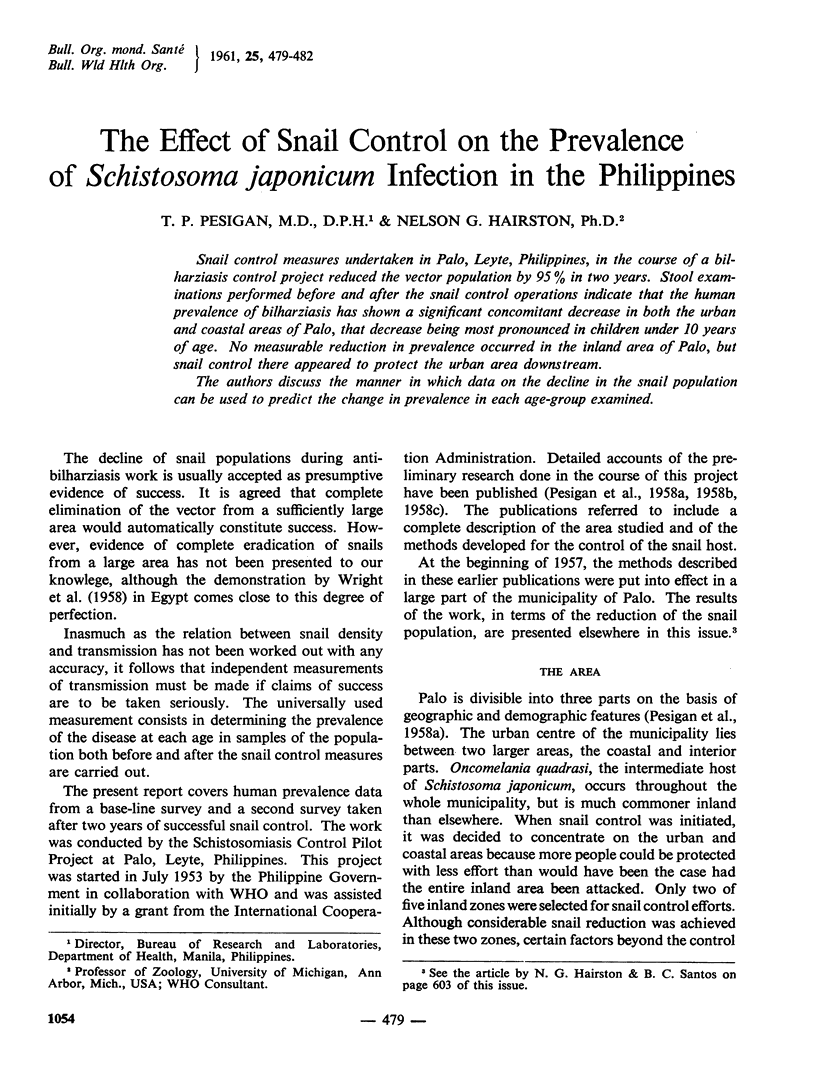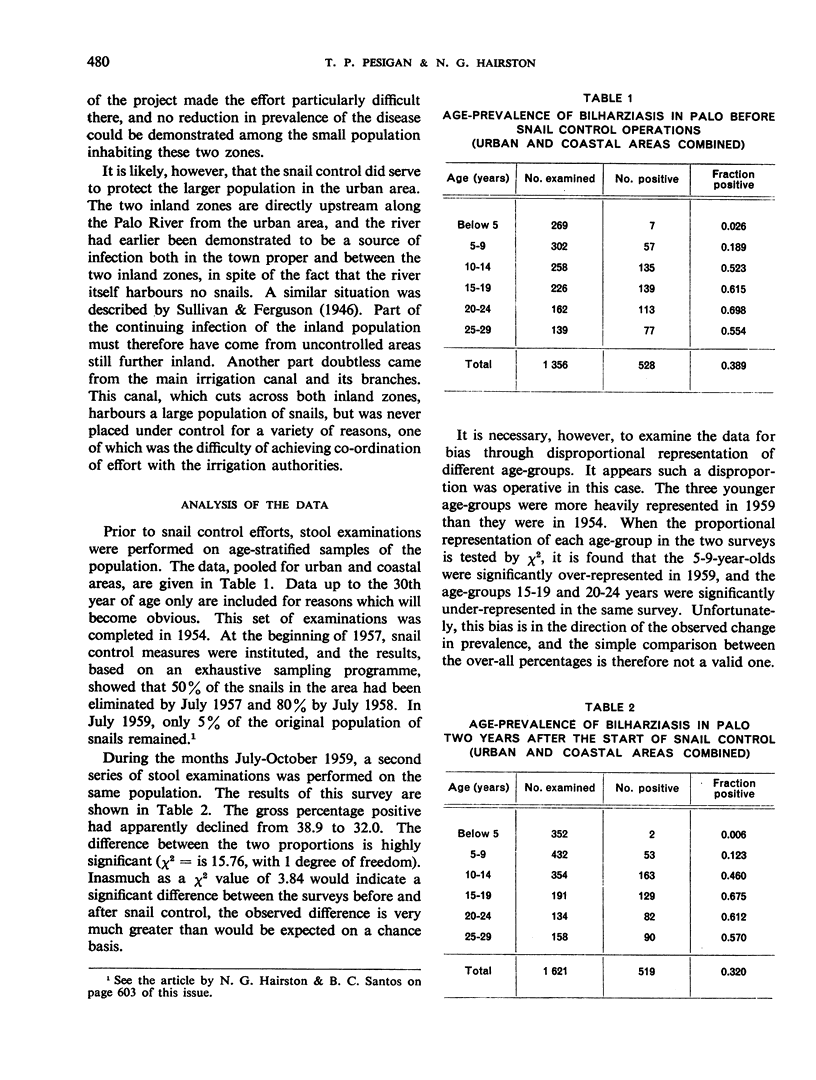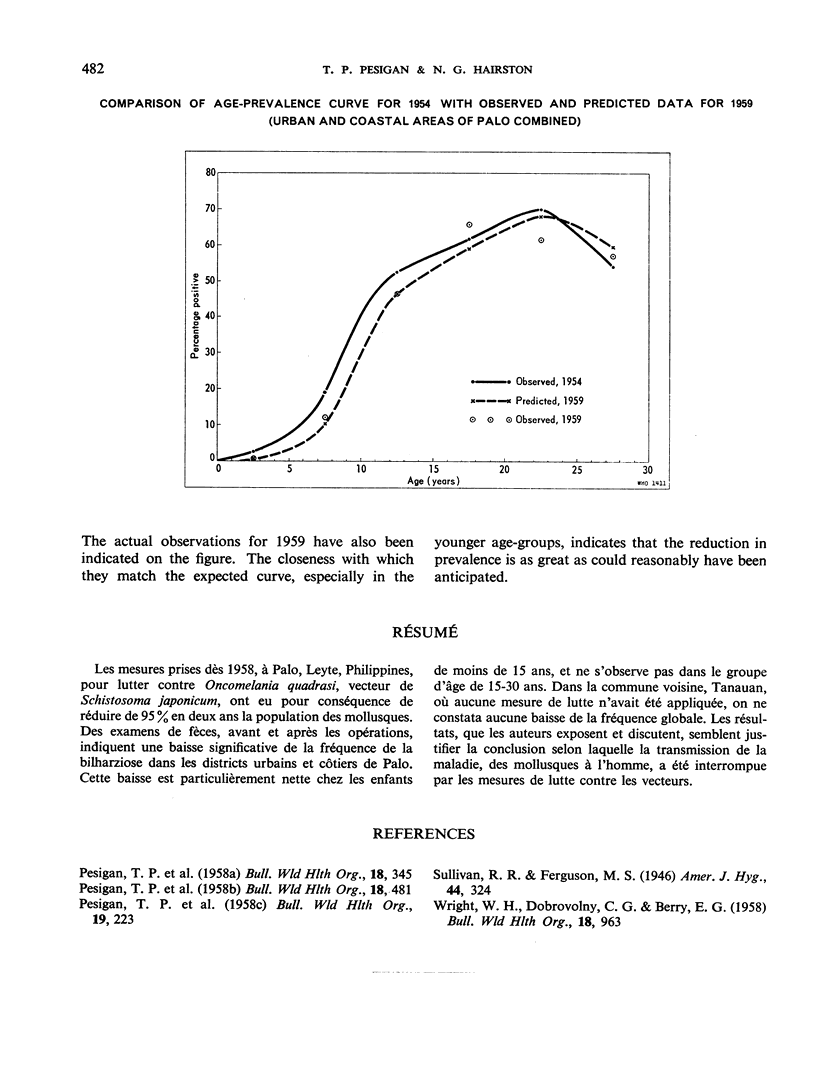Abstract
Snail control measures undertaken in Palo, Leyte, Philippines, in the course of a bilharziasis control project reduced the vector population by 95% in two years. Stool examinations performed before and after the snail control operations indicate that the human prevalence of bilharziasis has shown a significant concomitant decrease in both the urban and coastal areas of Palo, that decrease being most pronounced in children under 10 years of age. No measurable reduction in prevalence occurred in the inland area of Palo, but snail control there appeared to protect the urban area downstream.
The authors discuss the manner in which data on the decline in the snail population can be used to predict the change in prevalence in each age-group examined.
Full text
PDF



Selected References
These references are in PubMed. This may not be the complete list of references from this article.
- WRIGHT W. H., DOBROVOLNY C. G., BERRY E. G. Field trials of various molluscicides (chiefly sodium pentachlorophenate) for the control of aquatic intermediate hosts of human bilharziasis. Bull World Health Organ. 1958;18(5-6):963–974. [PMC free article] [PubMed] [Google Scholar]


